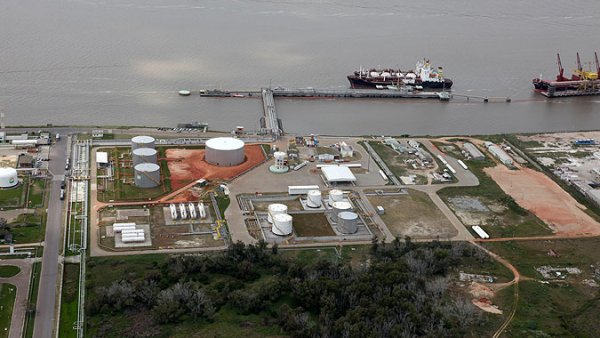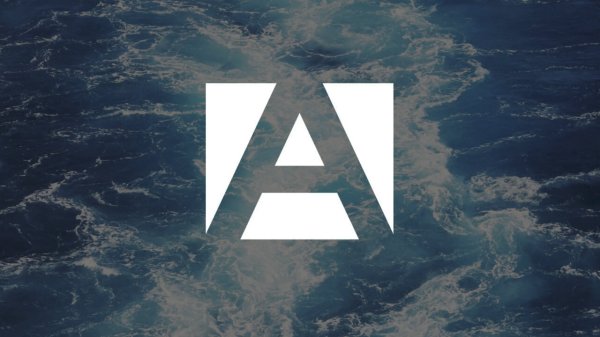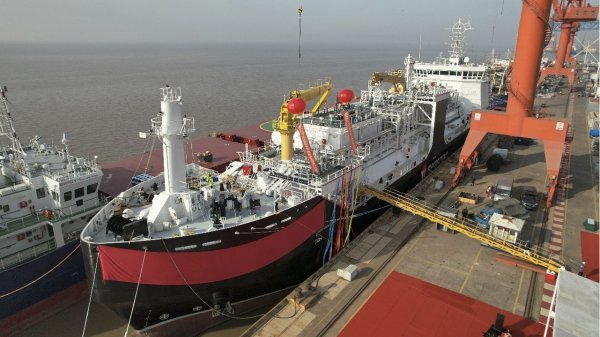Fuel-saving rotor sail business gets EUR 3m funding
Norsepower says analytics and third-party verification has helped it evolve its rotor sail from an innovative system for trial to a marketable technology.
Finnish engineering company Norsepower Oy Ltd has today announced that it has received a EUR 3 million investment from a syndicate led by venture capital fund Power Fund III, and has installed a second rotor sail on Bore's ro-ro vessel, MS Estraden [pictured].
The Norsepower Rotor Sail Solution is a modernised version of the Flettner rotor - a spinning cylinder that uses the Magnus effect to harness wind power to propel a ship. When the wind conditions are favourable, Norsepower Rotor Sails allow the main engines to be throttled back, thus saving fuel and reducing emissions while providing the power needed to maintain speed and voyage time. Rotor sails can be used with new vessels or can be retrofitted on existing ships without off-hire costs.
A single Norsepower Rotor Sail was installed on the 9,700-deadweight-tonne (dwt) ro-ro carrier MS Estraden in early 2015. Although the weather conditions were largely calm over the three-month trial, data analysis from vessel performance monitoring and verification software, ClassNK-NAPA GREEN, is said to have shown that the rotor sail delivered "clear and significant savings of 2.5 percent".
Based on this evidence, Bore has ordered a second installation - the first commercial order for a Flettner rotor in shipping. Doubling the rotor sails has now proven to double fuel savings; NAPA - the maritime data analysis, software and services provider - recorded a 6.1 percent reduction in fuel consumption, avoiding 1,200 tonnes of CO2 emissions annually.
Norsepower says that measurement, analytics and third-party verification has helped it evolve its rotor sail from an innovative system for trial, to a marketable fuel efficiency technology with a clear business case.
The Finnish firm says that this has also helped increase its enterprise value and secure its future with the EUR 3 million investment from Power Fund III - a clean tech venture fund managed by VNT Management - which is intended to be used support Norsepower's growth and market expansion.
Tuomas Riski, CEO, Norsepower commented: "Since delivering our first proven application with Bore last year, our business has grown from strength to strength. With this significant investment from VNT and our first commercial installation, we have now cemented our position as leaders in the growing wind technology market. Objective data and impartial verification of the fuel savings delivered by the technology has been absolutely critical to this evolution and will remain central to the way in which we work with shipowners and operators."
Jouni Salo, Product Manager, Shipping Solutions, NAPA, remarked: "Independent verification of Norsepower's technology has required a significant and complex analysis process. The operating route of the vessel posed many challenges from differing wind conditions to varying sea depths, all of which impact fuel consumption and had to be accounted for with randomised trialling, robust data collection and advanced statistical modelling. The results, however, have made it all worthwhile. The two-sail installation is delivering the largest fuel saving of any efficiency technology NAPA has measured. We talk figures of Rotor Sails being effective 80% of sailing time, 460kW average propulsion boost and 1.5MW peaking for 10% of time. The fact that NAPA has not only proven this eco-efficiency technology, but also boosted Norsepower's enterprise value through orders and investment really shows the power of big data when applied correctly."
Victoria Stulgis, Senior Associate, Carbon War Room, said: "It is great to see Norsepower, Bore and NAPA collaborating to pilot this technology and conduct rigorous data analysis. These first movers are key to demonstrating that efficiency technologies such as wind have proven savings, which can unlock new sources of investment for Flettner rotors and other technologies that can deliver significant efficiency gains."
The Norsepower Rotor Sail Solution is a modernised version of the Flettner rotor - a spinning cylinder that uses the Magnus effect to harness wind power to propel a ship. When the wind conditions are favourable, Norsepower Rotor Sails allow the main engines to be throttled back, thus saving fuel and reducing emissions while providing the power needed to maintain speed and voyage time. Rotor sails can be used with new vessels or can be retrofitted on existing ships without off-hire costs.
A single Norsepower Rotor Sail was installed on the 9,700-deadweight-tonne (dwt) ro-ro carrier MS Estraden in early 2015. Although the weather conditions were largely calm over the three-month trial, data analysis from vessel performance monitoring and verification software, ClassNK-NAPA GREEN, is said to have shown that the rotor sail delivered "clear and significant savings of 2.5 percent".
Based on this evidence, Bore has ordered a second installation - the first commercial order for a Flettner rotor in shipping. Doubling the rotor sails has now proven to double fuel savings; NAPA - the maritime data analysis, software and services provider - recorded a 6.1 percent reduction in fuel consumption, avoiding 1,200 tonnes of CO2 emissions annually.
Norsepower says that measurement, analytics and third-party verification has helped it evolve its rotor sail from an innovative system for trial, to a marketable fuel efficiency technology with a clear business case.
The Finnish firm says that this has also helped increase its enterprise value and secure its future with the EUR 3 million investment from Power Fund III - a clean tech venture fund managed by VNT Management - which is intended to be used support Norsepower's growth and market expansion.
Tuomas Riski, CEO, Norsepower commented: "Since delivering our first proven application with Bore last year, our business has grown from strength to strength. With this significant investment from VNT and our first commercial installation, we have now cemented our position as leaders in the growing wind technology market. Objective data and impartial verification of the fuel savings delivered by the technology has been absolutely critical to this evolution and will remain central to the way in which we work with shipowners and operators."
Jouni Salo, Product Manager, Shipping Solutions, NAPA, remarked: "Independent verification of Norsepower's technology has required a significant and complex analysis process. The operating route of the vessel posed many challenges from differing wind conditions to varying sea depths, all of which impact fuel consumption and had to be accounted for with randomised trialling, robust data collection and advanced statistical modelling. The results, however, have made it all worthwhile. The two-sail installation is delivering the largest fuel saving of any efficiency technology NAPA has measured. We talk figures of Rotor Sails being effective 80% of sailing time, 460kW average propulsion boost and 1.5MW peaking for 10% of time. The fact that NAPA has not only proven this eco-efficiency technology, but also boosted Norsepower's enterprise value through orders and investment really shows the power of big data when applied correctly."
Victoria Stulgis, Senior Associate, Carbon War Room, said: "It is great to see Norsepower, Bore and NAPA collaborating to pilot this technology and conduct rigorous data analysis. These first movers are key to demonstrating that efficiency technologies such as wind have proven savings, which can unlock new sources of investment for Flettner rotors and other technologies that can deliver significant efficiency gains."

|
IMO approves pricing mechanism based on GHG intensity thresholds
Charges to be levied on ships that do not meet yearly GHG fuel intensity reduction targets. |
|
|
|
||

|
VARO Energy expands renewable portfolio with Preem acquisition
All-cash transaction expected to complete in the latter half of 2025. |
|
|
|
||

|
NYK trials biofuel in milestone coal carrier test
Vessel is used to test biofuel for domestic utility company. |
|
|
|
||

|
H-Line Shipping orders LNG bunkering vessel
Vessel with 18,000-cbm capacity to run on both LNG and MDO. |
|
|
|
||

|
How to engineer and manage green shipping fuels | Stanley George, VPS
Effective management strategies and insights for evolving fuel use. |
|
|
|
||

|
Swedish government bans scrubber wastewater discharges
Discharges from open-loop scrubbers to be prohibited in Swedish waters from July 2025. |
|
|
|
||

|
MAN Energy Solutions achieves 100% load milestone for ammonia engine
Latest tests validate fuel injection system throughout the entire load curve. |
|
|
|
||

|
Petrobras secures ISCC EU RED certification for B24 biofuel blend at Rio Grande
Blend consisting of 24% FAME is said to have been rigorously tested to meet international standards. |
|
|
|
||

|
Stolt-Nielsen to fully control Avenir LNG with acquisition
Share purchase agreement to buy all shares from Golar LNG and Aequitas. |
|
|
|
||

|
Bureau Veritas supports launch of CIMC SOE's LNG bunkering vessel
Handover of Seaspan Energy's cutting-edge 7,600-cbm vessel completed. |
|
|
|
||
Related Links
- · Cutting fuel consumption with new wind propulsion solution [Insights]
- · Finland [Directory]

